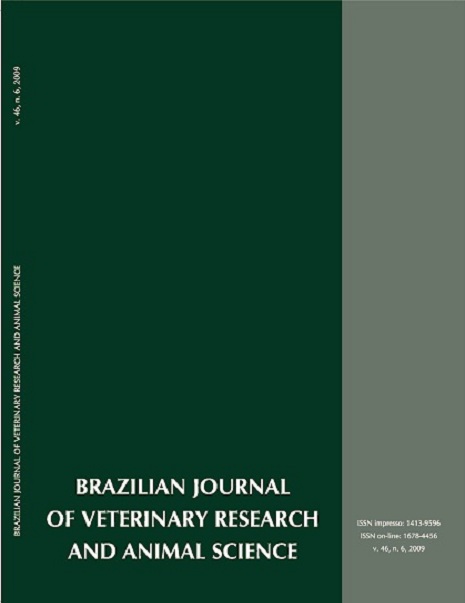The article has title in english
DOI:
https://doi.org/10.11606/S1413-95962009000600005Keywords:
Artificial insemination, Ovary, Wild felids, Contraception, Feline, ReproductionAbstract
Reproductive success in endangered captive small felids species is very low. Due to great variability in endocrine environment post gonadotropin treatment, after artificial insemination pregnancy rates are very low. Nowadays, ovarian activity controll improves the AI success in many species. In this study, new protocols were compared to improve the fertilization rates in artificial insemination programs in domestic cat. Female domestic cats were divided in three treatments: 1) control (eCG/hCG); 2) levonorgestrel (0.075 mg) orally during 37 days + eCG/hCG; 3) etonogestrel subdermal implant during 37 days + eCG/hCG: Laparoscopies were done 29-39 hours post hCG treatment to verify ovarian activity. Vaginal swabs were collected at laparoscopic procedures. Fecal samples were colected 60 days before, during and 60 days after the gonadotropin treatment for estradiol assay. Means comparisons were done by ANOVA test. Results demonstrated that etonogestrel (implant) and not oral levonorgestrel successfully suppressed ovarian activity. The levonorgestrel group did not show ovarian inactivity during the administration, presenting oestradiol peaks and without significative diference comparing to control group. All females presented anuclear and nuclear superficial vaginal epithelial cells at laparoscopies. In conclusion, the etonogestrel implant used in the domestic cat was efficient and can be used previous to gonadotropin protocol in artificial insemination programs, follicular aspiration and contraception.Downloads
Download data is not yet available.
Downloads
Published
2009-12-01
Issue
Section
UNDEFINIED
License
The journal content is authorized under the Creative Commons BY-NC-SA license (summary of the license: https://
How to Cite
1.
Ballarotti DT, Moraes W de, Oliveira CA de, Felippe Érica C, Moreira N. The article has title in english. Braz. J. Vet. Res. Anim. Sci. [Internet]. 2009 Dec. 1 [cited 2026 Jan. 18];46(6):465-73. Available from: https://revistas.usp.br/bjvras/article/view/26797





